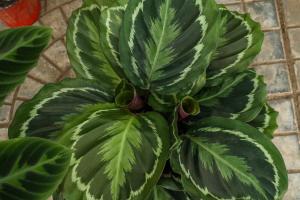Essential Tools and Materials for Making Drip Irrigation for Potted Plants
Keeping your potted plants properly hydrated can be a real challenge, especially during hot and dry spells. That’s where drip irrigation comes in handy. Drip irrigation ensures that your plants receive a steady and slow flow of water right where they need it the most, reducing waste and saving you both time and money. To help you get started, here are some of the essential tools and materials you’ll need:
1. PVC tubing - this will be your main water supply line
2. Drip emitters - these devices regulate the water flow to each individual plant
3. Hose connectors - these are used to connect the PVC tubing to a water source
4. Hose valves - these allow you to control the water flow to each individual plant
5. Tubing stakes - these are used to hold the tubing in place and prevent it from moving around
6. Pipe cutters - this tool is used to cut the PVC tubing to the desired length
7. Teflon tape - this is used to create a tight seal between the PVC tubing and the hose connectors
8. Hole punch - this tool is used to make holes in the PVC tubing where the drip emitters will be inserted
9. Drip emitter stakes - these are used to hold the drip emitters in place
Step-by-Step Guide for Making Drip Irrigation for Potted Plants
Now that you have all the necessary tools and materials, it’s time to get started on making your own drip irrigation system. Here’s a step-by-step guide:
Step 1: Plan your layout
The first thing you’ll need to do is determine where you want to place your potted plants and how many of them you want to water. This will help you determine how much PVC tubing you’ll need, as well as how many drip emitters and hose connectors you’ll need to purchase.
Step 2: Cut the PVC tubing
Using your pipe cutters, cut the PVC tubing to the desired length. Be sure to measure carefully to ensure that you have enough tubing for all of your plants.
Step 3: Punch holes in the tubing
Using your hole punch, make holes in the PVC tubing where you want to place your drip emitters. Be sure to space the holes evenly and according to the needs of your plants.
Step 4: Attach the hose connectors
Using Teflon tape to create a tight seal, attach the hose connectors to each end of the PVC tubing. Make sure that the connectors are securely in place and won’t leak.
Step 5: Connect the tubing to the water source
Attach one end of the PVC tubing to your water source using a hose connector. Be sure to use a hose valve to control the water flow to each individual plant.
Step 6: Insert the drip emitters
Insert the drip emitters into the holes you’ve punched in the PVC tubing, making sure that they are securely in place. Use the drip emitter stakes to hold them in place if necessary.
Step 7: Install the tubing stakes
Secure the PVC tubing in place using the tubing stakes. Be sure to space the stakes evenly and according to the needs of your plants.
Conclusion
Making your own drip irrigation system for potted plants is easier than you might think. With just a few essential tools and materials, you can ensure that your plants are getting the proper hydration they need to thrive, without wasting water or your valuable time. So why not give it a try and see the difference it can make in the health and beauty of your potted plants?

 how many times do yo...
how many times do yo... how many planted tre...
how many planted tre... how many pine trees ...
how many pine trees ... how many pecan trees...
how many pecan trees... how many plants comp...
how many plants comp... how many plants can ...
how many plants can ... how many plants and ...
how many plants and ... how many pepper plan...
how many pepper plan...































